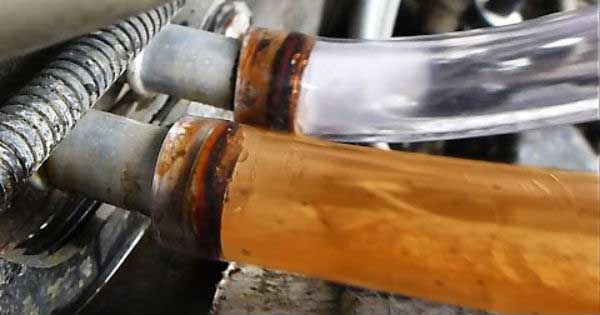While many drivers rely on quick lube services to ensure they keep their car in good shape, it turns out those places can be a ripoff. If you’re being pressured into flushing parts of your car, you need to know why you might have to. Otherwise, you could be paying for unnecessary procedures or even overpaying for auto flushes. Here is everything you need to know about flushing your car.

Watch Brake Fluid
While you don’t need to flush every single fluid your vehicle holds, some of them are more necessary and more powerful than others. When you flush your brake fluid, you help to ensure one of the most vital aspects of your car is safe when you drive.
Your brake fluid needs to be flushed in really occasional situations, but are vital if you see discoloration in the line. If you see brake fluid looking rust-colored or if you feel that it’s overheated, you should consider flushing it out.
If you see moisture in the line, you’ll need to flush it out so that it’s not contaminated. Contaminated brake fluid could cause your line to fail at the wrong time.
Flushing Engine Oil
If you want to keep your car regularly maintained, you’ll have to flush motor oil from time to time. There are regular times to flush, usually either 3,000 miles or three months, whichever is sooner. Take care of your car and flush that out in order to keep your car running.
It’s important to consider running a cleanser through the system. Running a cleanser, however, might end up costing you problems. That sludge that you push through could end up obstructing the car’s oil pump while it gets cleaned out.
This could lead to problems that are more expensive than is worthwhile. Only run a cleanser through your system if you absolutely have to. Otherwise, you could end up having to replace your whole fluid system later on.
Flushing Your Fuel System
While most of the lube garages in the world will tell you to flush this system out every 5,000 to 10,000 miles you drive, it’s not quite so serious. These lube stations like to make money and while it’s not quite that vital, you could be doing it almost 10 times more than you need to. You really only need to flush this system a few times.
Changing this fluid every 35,000 miles or so is as much as you really need to. This means you might only change these fluids and flush them out once or twice while you have a car. You need to have the right tools and the right mechanic to get this done.
Quick lube garages will jump at the chance to change out this fluid and clean out your whole system, but it’s nowhere near as urgent as they make it out to be.
Flushing Your Power Steering
Another fluid that’s vital but rarely needs to be flushed is your power steering fluid. If you end up running out of steering fluid, driving can be not only hard but even dangerous. Turning the wheel on your vehicle when you’re all out of steering fluid can be treacherous.
If you run out of this fluid, you could be in trouble. Thankfully you only need to keep your eye on it. Have your mechanic check it out every year to make sure that it’s okay.
If you smell burning in your engine or you find that there’s black grit in the line, flush out your power steering. When you see metal flakes in the line, you’ll need to clean out your system and replace your fluid.
Performing a Radiator Flush
Any car that’s been made after 2010 won’t need to have the radiator flushed very often. Cars after that period are made to use a coolant that lasts for a long time and doesn’t encounter many problems. Cars that are older than this period won’t be able to handle higher temperatures and don’t have the kind of corrosion protection that newer cars have.
If you drive a new vehicle, look at what the manual says about the radiator. You’ll find that your vehicle requires very rare attention for it to function.
If you drive an older car or a truck, draining your coolant every couple of years keeps you out of trouble. It ensures that you not only have enough coolant but that your coolant is clean and free of contamination. Your coolant will keep your vehicle from overheating or encountering problems.
For drivers of diesel vehicles, see more to find out how you should be treating your vehicle.
Flushing Transmission Fluids
If you have to flush your transmission fluid, you’ve probably driven 35,000 miles or more. Every car is a little different but the most common figure that drivers use is 35,000 miles. While some drivers will hit this milestone in just a couple of years, other drivers might never encounter that problem.
If you end up flushing it too frequently, you could end up with problems. This is where those quick lube garages will try to pressure you. They’ll attempt to change your transmission fluid every time you come in.
If you change it too often, you could do damage to your transmission, so avoid any upsales or pressured treatments you didn’t intend to pay for.
Auto Flushes are Less Important Than You Think
If you’re considering auto flushes for your car, make sure you only do the most essential work. Otherwise, you could be wasting your money.
If you’re worried about leaking fluids, check out our guide for tips on what to look for.




